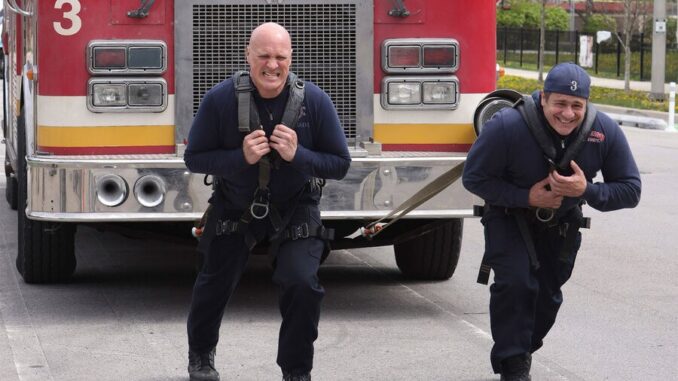
Since its debut in 2012, Chicago Fire has captured the hearts of viewers with its gripping portrayal of the brave firefighters and paramedics of Firehouse 51. However, the series didn’t start as flawlessly as its current reputation suggests. In its earliest episodes, a glaring inaccuracy in how the show depicted firefighting equipment and procedures led some viewers to question its authenticity.
This initial misstep threatened to alienate its audience, particularly those familiar with the inner workings of fire departments. Yet, by committing to realism and addressing the issues head-on, Chicago Fire managed to turn a critical error into a learning opportunity—one that ultimately elevated the series to greater heights.
A Rocky Start for Realism
Chicago Fire aimed to give viewers a raw and realistic glimpse into the world of firefighting, yet it stumbled right out of the gate. Observant fans immediately spotted discrepancies in the equipment and methods used by the firefighters in the first episodes. The uniforms, tools, and even certain emergency procedures failed to align with the real practices of the Chicago Fire Department.
For a show that aspired to immerse its audience in the lives of first responders, these inaccuracies posed a significant problem. A series built around a real profession must pay close attention to detail; otherwise, it risks losing the trust and engagement of its viewers.
Course Correction: Listening to the Experts
Acknowledging the early criticisms, the creators of Chicago Fire took swift action to address the inaccuracies. They brought in experts from the firefighting profession to consult on the show. From proper gear to realistic emergency tactics, these adjustments ensured that future episodes reflected the true challenges and operations of a firehouse.

This commitment to authenticity resonated with audiences. Viewers who were initially skeptical began to see the show as a more accurate portrayal of firefighting, while the production’s dedication to realism earned respect within the firefighting community.
A Foundation for Success
Correcting its initial mistakes not only salvaged Chicago Fire’s credibility but also set the stage for its enduring popularity. By focusing on realism and honoring the profession, the show built a loyal fan base. Its success spawned an entire universe of spin-offs, including Chicago P.D. and Chicago Med, each benefiting from the same commitment to authenticity.
Beyond entertainment, Chicago Fire became a platform for educating viewers about the dangers and heroism involved in firefighting. The series’ attention to detail serves as a tribute to real-life first responders, giving their work the respect it deserves while delivering compelling television.
The Lesson in Authenticity
The early stumble of Chicago Fire serves as a reminder of the importance of accuracy in storytelling, particularly for shows based on real professions. The producers’ quick response to feedback demonstrates a respect for both the audience and the professionals they depict.
Today, Chicago Fire stands as a testament to the value of realism in entertainment. By learning from its mistakes and striving for authenticity, the series not only entertains but also honors the everyday heroes it portrays.
